58+ Best Aeonium Varieties: Growing And Care Guide (With Pictures)
Aeoniums, a type of succulent, come in a wide range of shapes, sizes, and colors. These low-maintenance plants are perfect for indoor or outdoor spaces, but they do require specific conditions to thrive. In this blog post, we’ll delve into the world of Aeoniums, exploring different species, care requirements, and common problems you may encounter. From the compact ‘Jolly Green’ to the majestic tree-like Aeonium arboreum, there are numerous varieties to discover.
We’ll also provide tips on how to propagate these beautiful plants so you can create your own stunning garden. With over 100 different types of succulents identified in this article alone, you’re sure to find the perfect addition to your indoor or outdoor space. Whether you’re a seasoned gardener or just starting out, Aeoniums are an excellent choice for those who want to add some greenery to their lives.
What Are Aeoniums?
Aeoniums belong to the succulent family, with their natural habitat being the Canary Islands. However, they can also be found in other parts of the world due to their adaptability. One of the most distinctive features of Aeoniums is their rosette shape, which comes in a wide range of colors. This unique characteristic makes them stand out and adds an extra layer of beauty to any space.
If you’re looking for a low-maintenance yet striking plant, an Aeonium is an excellent choice, guaranteed to catch the attention of anyone who sees it.
Facts about Aeonium.
Aeonium is a succulent plant genus comprising approximately 35 species within the Crassulaceae family. Native to Macaronesia, specifically the Canary Islands, Madeira, and Cape Verde, this group of plants has evolved distinct characteristics that set them apart from other flora. The name Aeonium originates from ancient Greek, with αἰώνιος (aiōnios) translating to ‘eternal’.
This refers to the plant’s unique feature: its leaves are arranged in rosettes at the ends of branches, accompanied by flowers that bloom in terminal racemes. One of the most striking aspects of Aeoniums is their foliage, which often displays contrasting colors and may take on hues such as green, yellow, pink, red, or purple. As a result, they have gained popularity as both garden and indoor plants, prized for their striking appearance.
These succulents possess an added advantage: they are highly drought-tolerant and can thrive in poor soil conditions. Propagation typically occurs through cuttings, rather than seeds, which Aeoniums do not produce. While many species within the genus are monocarpic, meaning they perish after flowering, a select few, such as Aeonium haworthii, exhibit polycarpic tendencies, capable of producing multiple blooms and seeds throughout their lifetime.
It’s worth noting that Aeoniums can be susceptible to pests like mealybugs, scale insects, and aphids.
Types of Aeoniums
Aeonium ‘Jolly Green’.
Among the numerous succulent species, Aeonium ‘Jolly Green’ stands out for its unique characteristics. Native to the Canary Islands, this low-maintenance gem thrives in environments with minimal upkeep. Its adaptability is one of its greatest strengths, allowing it to flourish in a wide range of conditions.
Whether basking in full sun or enjoying partial shade, Aeonium ‘Jolly Green’ requires little water and can tolerate varying temperatures, making it an excellent choice for those living in warmer climates.
Aeonium aizoon.
Aeonium aizoon, a succulent belonging to the Crassulaceae family, hails from Morocco and Spain. Its leaves boast striking green with red edge coloration, while its flowers shine in a bright yellow hue. This versatile plant has gained popularity for cultivation in gardens and containers alike. As part of the Aeonium genus, which comprises around 35 succulent species, Aeonium aizoon’s roots run deep into the Canary Islands, Madeira, Morocco, and Portugal.
Despite its drought-tolerant nature, it thrives in either full sun or partial shade conditions.
Aeonium appendiculatum.
In the lush landscapes of the Canary Islands, one succulent stands out for its striking appearance: Aeonium appendiculatum, also known as black aeonium or pinwheel aeonium. This low-maintenance plant thrives in a variety of environments and boasts an impressive height of up to 12 inches (30 cm). Its small, bright yellow blooms add a pop of color to the rosette pattern of its leaves, which can range in hue from green to fiery red to deep purple.
With its easy-care nature and ability to tolerate drought, it’s no wonder Aeonium appendiculatum has become a favorite among gardeners and container enthusiasts alike. Plus, propagating this succulent is a breeze – simply use stem cuttings or offsets to multiply your plant.
Aeonium arboreum.
Aeonium arboreum, a succulent perennial native to the Canary Islands, boasts an impressive physical presence. Its branching stems support rosettes of spoon-shaped leaves, which can reach up to 12 cm in length and exhibit hues of green or reddish tones. The plant’s growth habit is characterized by its ability to attain heights of 60 cm and widths of 90 cm.
In addition to its striking foliage, Aeonium arboreum produces small yellow flowers that are arranged in inflorescences measuring up to 30 cm in length. As a popular ornamental plant, it thrives in conditions with full sun or partial shade outdoors, as well as indoors as a houseplant. Its remarkable tolerance for drought and heat only adds to its appeal.
While it may be easily mistaken for Aeonium tabuliforme due to the similarity of their leaf shapes, the latter’s much larger rosettes, reaching up to 80 cm in diameter, serve as a distinguishing feature.
Aeonium Arboreum (Tree Aeonium or Irish Rose).
Aeonium Arboreum, a succulent native to the Canary Islands, stands out for its impressive size and striking foliage. This evergreen plant can reach up to six feet tall and four feet wide, with thick, fleshy leaves that transition from green to burgundy hues. In the spring, it produces bright yellow flowers that add to its visual appeal.
Despite being a drought-tolerant species, Aeonium Arboreum thrives in well-drained soil and full sun to partial shade.
If you reside in an area prone to frost, consider potting this plant to bring it indoors during the winter months. This adaptable succulent requires minimal watering, making it an ideal choice for busy gardeners or those new to succulent cultivation.
Aeonium arboreum ‘Atropurpureum’ (Black Tree Aeonium)
The Aeonium arboreum ‘Atropurpureum’ succulent, native to the Canary Islands, boasts striking leaves with dark green hues and purple-black tips. Its bright yellow or white flowers add a pop of color to its otherwise structural appearance, reaching up to six feet in height. What’s more, this resilient plant is ideal for those seeking low-maintenance cultivation.
It thrives under conditions where water is limited, tolerating some drought, while also boasting natural resistance to most pests and diseases, making it a reliable choice for busy gardeners.
Aeonium Arboreum ‘Zwartkop’ (Black Rose Succulent).
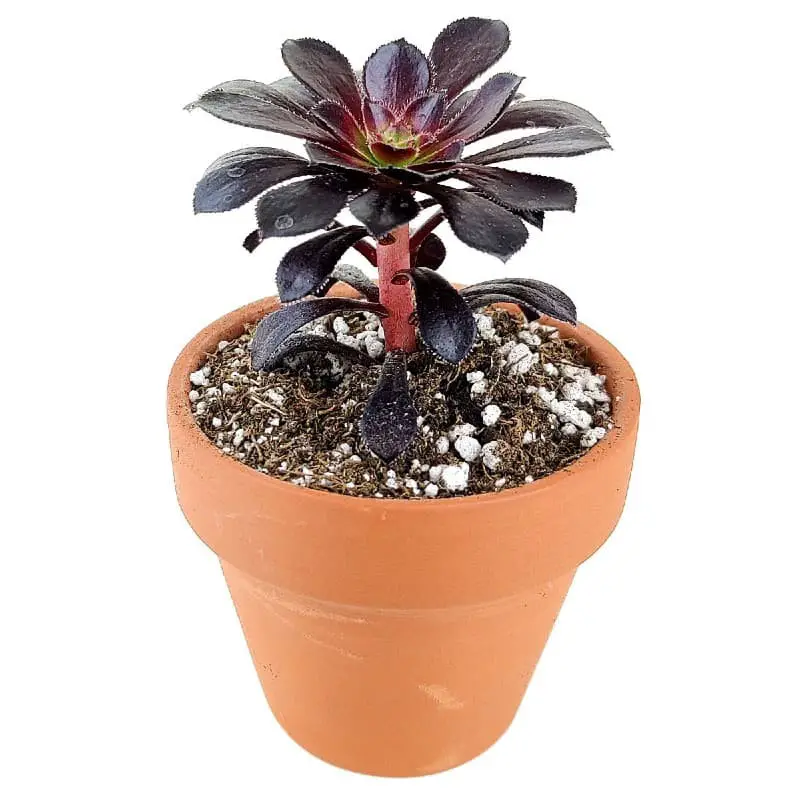
Aeonium Arboreum ‘Zwartkop’ stands out for its striking black leaves, a result of high anthocyanin pigment levels. Native to the Canary Islands, this unique succulent is one of the most popular Aeonium varieties. Its slow-growing nature and potential height of up to two feet make it an excellent choice for containers, rock gardens, or adding visual interest to succulent arrangements. When cultivating ‘Zwartkop’, it’s essential to provide well-drained soil and a drought-tolerant environment.
Watering should be done deeply but infrequently, allowing the soil to fully dry out between intervals. With proper care, this succulent thrives, showcasing its beautiful black foliage.
Aeonium Arboreum ‘Luteovariegatum’.
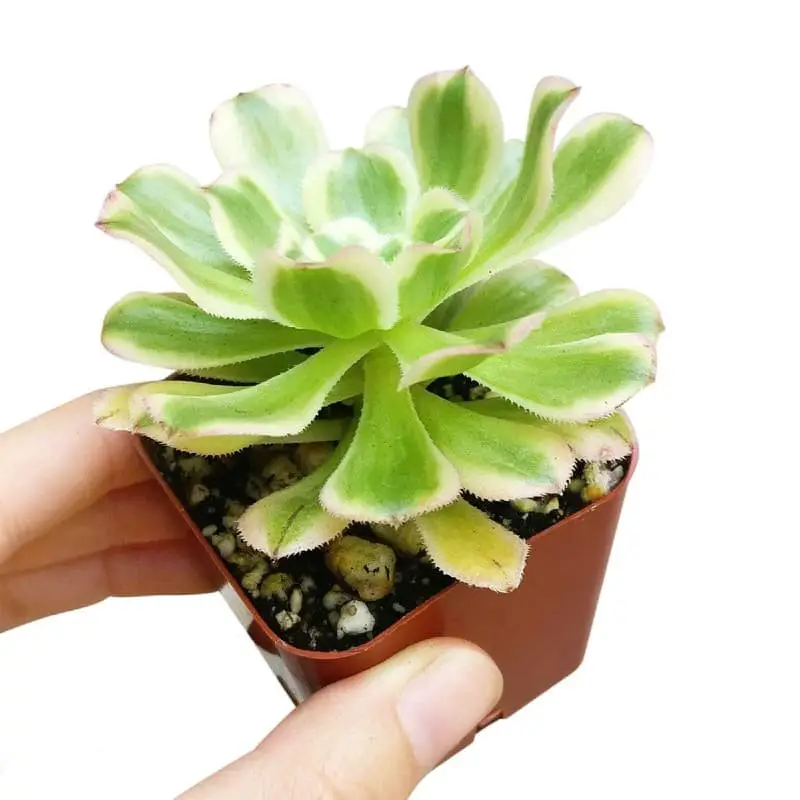
Discover the charm of Aeonium Arboreum ‘Luteovariegatum’, a stunning succulent from the Canary Islands. This variegated beauty can reach up to three feet in height, boasting leaves that are a vibrant yellow with green accents. The subtle beauty doesn’t stop there – the plant’s white flowers add an extra touch of elegance.
With its low-maintenance requirements and ability to thrive in dry conditions, Aeonium Arboreum ‘Luteovariegatum’ is an excellent choice for novice gardeners looking to start their succulent journey.
Aeonium arboreum var. atropurpureum.
Hailing from the Canary Islands, the Aeonium arboreum var atropurpureum boasts striking dark purple foliage that sets it apart from other succulent varieties. Its rosette-shaped leaves can reach impressive diameters of up to 12 inches, making it a standout addition to any indoor or outdoor garden. With its versatility and unique appearance, this aeonium variety is an excellent choice for gardening enthusiasts looking to add some visual interest to their spaces.
Aeonium arboreum var. holochrysum.
The Aeonium arboreum var. holochrysum, a unique variety of the Aeonium arboreum species, is native to Lanzarote, in the Canary Islands. Its striking features include rosette-shaped leaves with a green center and bright yellow margins. This succulent’s hardy nature makes it an attractive choice for cultivation, as it requires minimal care and can thrive in dry conditions.
One of its most appealing qualities is its ability to be easily propagated through stem cuttings, making it an excellent introduction to succulent gardening for beginners.
Aeonium arboreum var. luteovariegatum.
Aeonium arboreum’s variegated cousin, luteovariegatum, boasts a striking appearance, characterized by its slow-growing habit that can stretch up to three feet in height. The succulent’s rosettes are adorned with vibrant yellow and green leaves, perfectly topped with splashes of red. In the spring, tiny yellow blooms make their appearance, adding a touch of whimsy to this already-remarkable plant.
Despite its delicate beauty, luteovariegatum is surprisingly low-maintenance, thriving both indoors and outdoors.
Aeonium arboreum var rubrolineatum.
Located in the Canary Islands, Aeonium rubrolineatum, also referred to as Red-edged Aeonium, boasts a unique appearance characterized by its reddish-hued leaves with a waxy coating. The striking foliage is just one aspect of this succulent’s appeal, as it also produces bright yellow flowers that grow in clusters. Reaching heights of up to two feet, this plant has become a popular choice for succulent garden enthusiasts due to its compact size and vibrant color scheme.
Aeonium aureum.
Aeonium aureum, a succulent native to the Canary Islands, boasts a unique appeal that has made it a favorite among plant enthusiasts. As part of the Aeonium genus, which comprises approximately 35 species, this stunning plant can grow up to 30 cm in height and flaunts vibrant yellow blooms. Its striking appearance is just one aspect of its charm, as Aeonium aureum also boasts low-maintenance care requirements that make it an ideal choice for busy gardeners or those new to succulent cultivation.
Notably, the plant thrives under drought conditions, tolerating minimal watering while simultaneously resisting pests and diseases. This resilience, combined with its ease of propagation through cuttings and adaptability to a wide range of climates, has cemented Aeonium aureum’s status as an excellent choice for beginner succulent growers.
Aeonium aureum greenovia (Mountain Rose or Green Rose Buds)
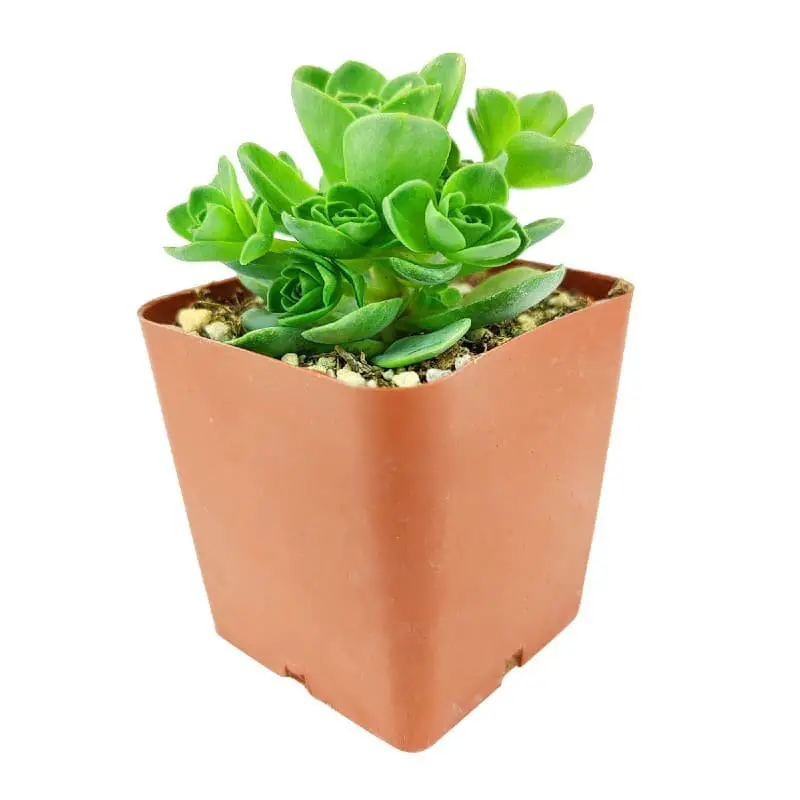
Aeonium aureum greenovia, a succulent perennial native to the Canary Islands, boasts a unique appearance that sets it apart from other flowering plants. Its rosettes of fleshy leaves reach 30 cm in height and 60 cm in width, with vibrant green foliage featuring striking red margins. The plant’s bright yellow flowers add an extra layer of visual appeal.
As an ornamental plant, Aeonium aureum greenovia is highly sought after for its versatility.
It thrives in gardens, making a stunning addition to outdoor spaces, and can also be successfully cultivated as a houseplant or container plant. The species is equally well-known by the common names mountain rose and green rose buds.
One of the plant’s most impressive attributes is its hardiness. Capable of tolerating drought and salt spray with ease, it requires only full sun to partial shade and well-drained soil to flourish.
Its natural resistance to most pests and diseases further solidifies its reputation as a low-maintenance yet high-reward addition to any garden.
For those looking to expand their plant collection or share this beauty with others, Aeonium aureum greenovia can be propagated through seeds, cuttings, or offsets. Its ease of propagation only adds to the plant’s appeal, making it an attractive option for both seasoned horticulturists and novices alike.
Aeonium balsamiferum.
Deep in the Canary Islands, you’ll find Aeonium balsamiferum thriving amidst the rugged landscape. This succulent’s claim to fame lies in its striking, dark green leaves adorned with a delicate white powdery coating – actually a natural wax that shields them from the unforgiving environment. As an evergreen, Aeonium balsamiferum proudly retains its foliage year-round, making it a low-maintenance yet fascinating addition to any collection.
Its hardiness also makes propagation a breeze, courtesy of stem cuttings that can be easily rooted and nurtured into new plants.
Aeonium canariense (Canary Island Aeonium)
Aeonium canariense, a member of the Crassulaceae family, hails from the Canary Islands, its natural habitat. This evergreen succulent has a remarkable ability to grow up to 30 cm tall, its foliage comprising green leaves with a subtle reddish undertone, arranged in aesthetically pleasing rosettes. As summer arrives, bright yellow blooms emerge, adding vibrant color to the plant’s overall appearance.
Aeonium canariense var. palmense.
Aeonium canariense var. palmense stands out with its striking foliage and vibrant blooms. The leaves of this succulent are a deep green color and can grow up to 50 centimeters in length, making them a notable feature of the plant. Additionally, the inflorescences that produce yellow or white flowers can reach heights of up to 60 centimeters, adding a pop of color to the landscape. Native to the Canary Islands, this unique species is a true gem among succulents.
Aeonium canariense var. subplanum.
Aeonium canariense var. subplanum, a diminutive yet charming succulent, hails from the Canary Islands. Its delicate light green foliage and vibrant pink blooms make it a stunning addition to any indoor or outdoor space. Reaching up to 30 centimeters in height and width, this slow-growing gem is an excellent choice for novice plant enthusiasts due to its low-maintenance requirements.
Aeonium canariense var. virgineum.
Aeonium canariense var. virgineum, a succulent species, showcases a unique combination of characteristics. Its slow-growing nature results in the formation of rosettes comprised of dark green leaves with distinctive red edges and a powdery coating. As the plant matures, it produces bright yellow flowers in the summer months.
Native to the Canary Islands, Aeonium canariense var. virgineum thrives in rocky environments, belonging to the Crassulaceae family.
This hardy species is remarkably easy to cultivate and demonstrates impressive resilience to drought and poor soil conditions.
When grown indoors as a houseplant or in containers, Aeonium canariense var. virgineum excels in full sun or partial shade. Its low-maintenance nature allows it to withstand infrequent watering, tolerating dryness between hydration.
Aeonium castello-paivae.
The Aeonium castello-paivae, a stunning and relatively uncommon species from Tenerife, has adapted remarkably well to life in containers. When it comes to its growing conditions, this aeonium thrives in full sun to partial shade. Its most striking feature, however, is the unique combination of green leaves with yellow margins and delicate white flowers accompanied by pinkish-red bracts.
Aeonium ciliatum.
Aeonium ciliatum, a diminutive succulent native to the Canary Islands, thrives in its natural habitat, reaching heights of up to 30 centimeters. Its rosettes are characterized by fleshy, green leaves adorned with striking red margins. In spring and summer, these perennials produce bright yellow or white flowers, adding a touch of vibrancy to any landscape.
As an easy-going plant, Aeonium ciliatum is remarkably resilient and adaptable to various conditions.
While it excels in full sun, it can also tolerate some shade. Furthermore, this succulent is incredibly drought-tolerant, requiring minimal watering to survive.
Aeonium cuneatum.
Aeonium cuneatum is a striking species of flowering succulent that hails from Morocco. Its evergreen rosettes can grow up to 30 cm (12 in) across, supported by stems reaching heights of around 60 cm (24 in). The leaves are an attractive blend of green and red hues, while the tiny white flowers add a touch of elegance. This ornamental plant has gained popularity as a houseplant in temperate regions, where it thrives in conditions that mimic its native habitat.
It’s also commonly used to create visually striking rock gardens and succulent collections.
Aeonium Cyclops.
In the lush landscapes of Madeira, Aeonium Cyclops thrives as an evergreen perennial, reaching heights of up to one meter. Its unique feature is the central rosette surrounded by smaller ones, earning it the name Cyclops. The plant’s leaves are oblong- lancelike in shape, fleshy, and a vibrant green with a striking red margin. When flowers do bloom, they’re small, tubular, and a beautiful shade of yellow-green, nestled on inflorescences that can stretch up to 30 cm long.
Despite its need for occasional watering, Aeonium Cyclops is remarkably drought tolerant, making it an ideal choice for those who forget to water their plants from time to time. It does best in full sun to partial shade and well-drained soil, where it can absorb the necessary nutrients. Propagation is relatively straightforward, achievable through stem cuttings or offsets, allowing you to multiply your lovely Aeonium Cyclops.
Aeonium davidbramwellii.
Aeonium davidbramwellii, a species of succulent plant belonging to the Crassulaceae family, hails from the Canary Islands. This unique plant bears the name of British botanist David Bramwell in recognition of his contributions to the field. Its leaves boast a striking green and white spotted pattern, while its flowers shine bright with a vibrant yellow hue. The plant itself can grow up to 30 centimeters tall, making it an attractive addition to any succulent garden.
As a low-maintenance option, Aeonium davidbramwellii is well-suited for those looking for a drought-tolerant and easy-to-care-for choice.
Aeonium decorum.
Aeonium decorum, a succulent species native to the Canary Islands, boasts impressive dimensions – reaching up to 20 cm tall and 60 cm wide. Its rosette-like arrangement of leaves, measuring up to 15 cm long, is characterized by vibrant green hues with striking red margins and tips.
The plant’s showstopping feature, however, lies in its white flowers, which bloom in a raceme that can grow up to 30 cm tall.
Aeonium decorum has gained popularity as an ornamental plant due to its striking foliage and blooms. Its drought tolerance also makes it an ideal choice for xeriscaping.
This adaptable species is easily propagated through stem cuttings or offsets, allowing enthusiasts to multiply and share their prized plants.
Aeonium tabuliforme (Aeonium Dinner Plate).
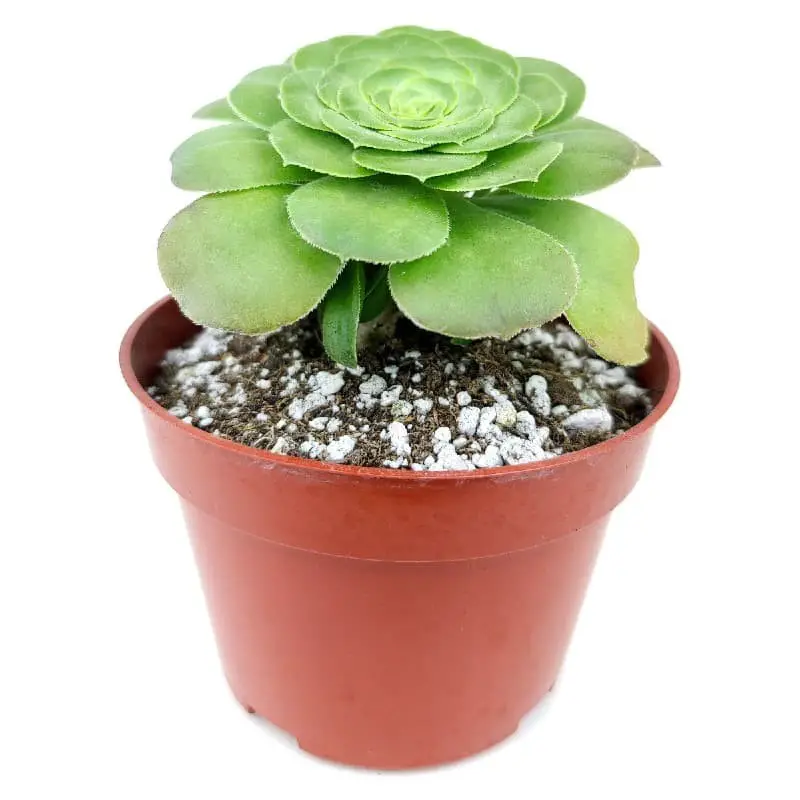
Aeonium tabuliforme, a stunning succulent native to the Canary Islands, boasts striking features that make it a popular choice among plant enthusiasts. Its rosette-shaped leaves, thick and fleshy with a glossy surface, not only provide a unique visual appeal but also showcase its remarkable ability to store water. The plant’s bright yellow flowers, which bloom during the summer months, add a pop of color to its evergreen foliage, ensuring it remains lush and vibrant throughout the year.
One of Aeonium tabuliforme’s most impressive attributes is its exceptional drought tolerance, allowing it to thrive with minimal watering. This low-maintenance succulent makes it an excellent option for gardeners seeking a straightforward and rewarding growing experience.
Aeonium diplocyclum.
The Aeonium diplocyclum is a fascinating species of flowering plant that belongs to the Crassulaceae family and is endemic to the Canary Islands. As an evergreen succulent perennial, it boasts an impressive height of up to 30 cm and spreads out wide, reaching a maximum width of 60 cm, with its rosettes comprising fleshy green leaves that provide its characteristic appearance. When summer arrives, this plant awakens with vibrant yellow flowers, adding a pop of color to its surroundings.
Aeonium dodrantale (Rose Succulent).
Aeonium dodrantale is a succulent perennial that thrives in its native habitat on the Canary Island of Tenerife. This Crassulaceae family member produces rosettes of fleshy leaves on branching stems, reaching heights of 30 cm (12 in) and widths of 60 cm (24 in). The leaves themselves are oblanceolate in shape, growing up to 15 cm (6 inches) long, and boast a striking mid-green color with vibrant red margins.
As summer arrives, the plant rewards observers with a showy display of small yellow flowers on slender racemes.
Aeonium Emerald Ice.
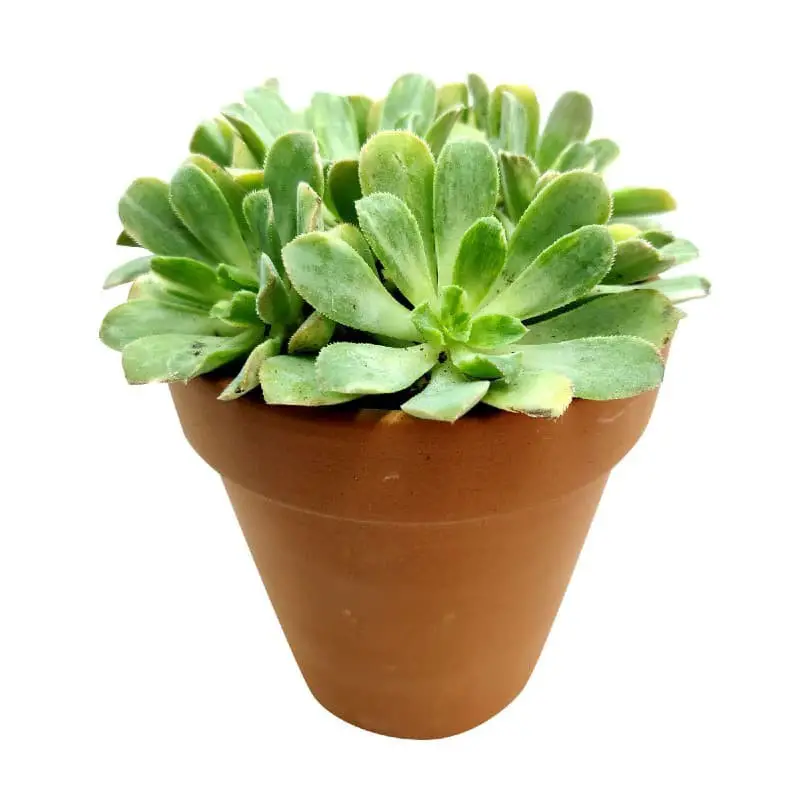
Indulge in the stunning beauty of Aeonium Emerald Ice by bringing it home today! This striking succulent boasts intricately patterned leaves that harmoniously blend shades of green and white, creating a visually appealing display. With its rapid growth rate, this plant can easily reach heights of up to 24 inches, making it an excellent choice for adding depth and color to your garden or indoor space.
As the seasons change, Aeonium Emerald Ice will reward you with bright yellow blooms in the springtime, further enhancing its appeal. Whether you’re seeking a statement piece or a unique addition to your outdoor oasis, this captivating succulent is sure to impress.
Aeonium glandulosum.
The Aeonium glandulosum species is uniquely found in the Canary Islands, specifically on the island of Tenerife, where it thrives in its natural habitat. This succulent was first documented by English botanist William Jackson Hooker back in 1837. As a member of the Crassulaceae family, which boasts popular succulent varieties like Sedum and Sempervivum, Aeonium glandulosum is one of approximately 35 species that call the Canary Islands, Madeira, and Morocco home.
The genus as a whole is characterized by its succulent nature. The plant itself is compact, reaching heights of around 30 cm (12 in). Its leaves are a vibrant green, fleshy, and covered in tiny glandular bumps that secrete a sticky substance. In contrast, the bright yellow flowers grow on short stalks and take the form of tubules. One of the advantages of Aeonium glandulosum is its ease of cultivation, making it an excellent choice for indoor settings.
It can be propagated through stem cuttings or offsets, providing endless opportunities for plant enthusiasts to share their passion.
Aeonium glutinosum.
Aeonium glutinosum, a diminutive evergreen succulent, is characterized by its rosettes of fleshy, green leaves that occasionally display reddish or purplish tints. During the summer months, this plant produces small yellow flowers as an added visual delight. Native to the Canary Islands, Aeonium glutinosum can be found thriving in rocky outcroppings and cliffside crevices. Its compact size and low-maintenance requirements make it a popular choice for container gardening.
Ideally, this succulent prefers full sun or partial shade, and once established, can tolerate moderate drought conditions. However, it is not frost-tolerant, so protection from harsh winter weather is essential.
Aeonium gomerense.
Aeonium gomerense, a species of flowering succulent native to Tenerife, thrives as an evergreen with rosettes of fleshy leaves reaching 30 cm tall and 60 cm wide. The leaves’ striking green hue is complemented by vibrant red margins, while bright yellow flowers add a pop of color. This ornamental gem is sought after for gardens and containers alike. Despite being easy to care for and requiring minimal maintenance, it still demands well-drained soil and protection from frost to truly flourish.
Aeonium goochiae.
Aeonium goochiae, a succulent species within the Crassulaceae family, is endemic to Tenerife in the Canary Islands. Characterized by its evergreen nature and succulent leaves, this plant grows up to 30 cm tall and wide, forming rosettes that reach 15 cm long and wide. The leaves themselves boast vibrant green colors with striking red margins, while the flowers are a pure white hue. This species was named in honor of British botanist Charles Gooch.
Aeonium gorgoneum.
Aeonium gorgoneum, a stunning succulent native to the Canary Islands, boasts striking features within its Aeonium family classification. Reaching approximately 12 inches in both height and width, this plant’s fleshy, lance-shaped leaves boast a vibrant green hue with distinctive red margins. The foliage is neatly arranged in rosette patterns, accompanied by bright yellow blooms.
Characterized as drought-tolerant, Aeonium gorgoneum thrives in full sun to partial shade conditions, making it an ideal choice for succulent newcomers and those seeking low-maintenance beauty.
Aeonium hawbicum.
Aeonium hawbicum, a diminutive yet striking succulent, boasts rosettes of fleshy, blue-green leaves with vibrant red margins. Its bright yellow flowers burst forth in the summer months, adding a pop of color to its otherwise understated appearance. Native to the Canary Islands and Madeira, this succulent has evolved to thrive in arid conditions, tolerating drought and preferring full sun to partial shade.
As easy-to-grow houseplants, Aeoniums are ideal for busy individuals or those new to the world of succulents. Their low-maintenance nature allows them to flourish even with occasional neglect. Moreover, they’re remarkably adaptable, capable of withstanding a broad range of temperatures and requiring minimal watering. When it’s time to hydrate your Aeonium, be sure to allow the soil to dry out slightly between waterings.
During the growing season, provide a balanced succulent fertilizer on a monthly basis. Propagation is also straightforward, as stem or leaf cuttings can be used to multiply this charming succulent.
Aeonium haworthii (Pinwheel Aeonium).
A charming, compact succulent, this Aeonium variety thrives in sunny conditions, producing delicate rosettes composed of soft pink leaves with a powdery texture. Reaching heights of up to 30cm and spreading approximately 30cm wide, it’s an ideal addition to any well-lit indoor space or outdoor garden bed. Interestingly, its natural habitat is the Canary Islands, where it grows wild in harmony with the subtropical climate.
Aeonium hierrense.
The Aeonium hierrense succulent, native to the Canary Islands, is a striking addition to any plant collection. As part of the Aeonium genus, which comprises around 35 species, this plant boasts a unique rosette-forming shape that can reach up to 30 cm in diameter. Its leaves are characterized by their green hue and white margins, boasting a leathery texture that sets them apart from other succulents.
In the spring or summer, Aeonium hierrense produces bright yellow flowers that add an extra layer of visual appeal. Despite its striking appearance, Aeonium hierrense is surprisingly low-maintenance. It thrives in environments with bright, indirect light, although it can tolerate some direct sunlight. Watering is also relatively straightforward: simply allow the soil to dry out between waterings and only provide additional hydration when the leaves start to wrinkle during the winter months.
Aeonium korneliuslemsii.
Nestled within the Canary Islands’ unique ecosystem is a stunning succulent that belongs to the Aeonium family. As its vibrant yellow blooms burst forth in spring, this remarkable plant showcases its beauty. The leaves of this hardy succulent are a lush green, and it has the capacity to reach heights of up to 30 centimeters.
One of the most appealing aspects of this succulent is its low-maintenance nature, making it an ideal choice for gardening newcomers or those seeking a fuss-free addition to their indoor or outdoor spaces.
Aeonium lancerottense.
Aeonium lancerottense, a succulent plant native to Lanzarote in the Canary Islands, has been a part of botanical records since Carl Linnaeus first described it in 1753. The species can reach heights of up to 60 cm and is characterized by its rosette-shaped leaves with green centers and vibrant red margins. During the summer months, Aeonium lancerottense produces bright yellow flowers that add a pop of color to its already striking appearance.
As a popular choice for indoor cultivation, this plant thrives in warm climates and is often grown as a houseplant or incorporated into gardens. Beyond its aesthetic appeal, Aeonium lancerottense has also been used in traditional medicine practices. Its unique properties have made it a sought-after species among botanists and enthusiasts alike.
Aeonium leucoblepharum.
Aeonium leucoblepharum, a succulent native to Morocco, boasts unique characteristics within the Crassulaceae family. As part of the Aeonium genus, which comprises approximately 35 species, this plant stands out for its rosette-shaped leaves that are often variegated or display intriguing colors and patterns. The flowers, though small, grow on slender stems and add to the plant’s overall appeal.
Aeonium leucoblepharum is particularly noteworthy for its white-edged leaves, which exhibit more pronounced variegation when exposed to bright light. The rosettes can reach up to four inches in diameter, making them a striking feature of this species. Furthermore, the flowers are white and typically bloom in late winter or early spring, adding an extra layer of beauty to this already stunning plant.
Aeonium ‘Lily Pad’.
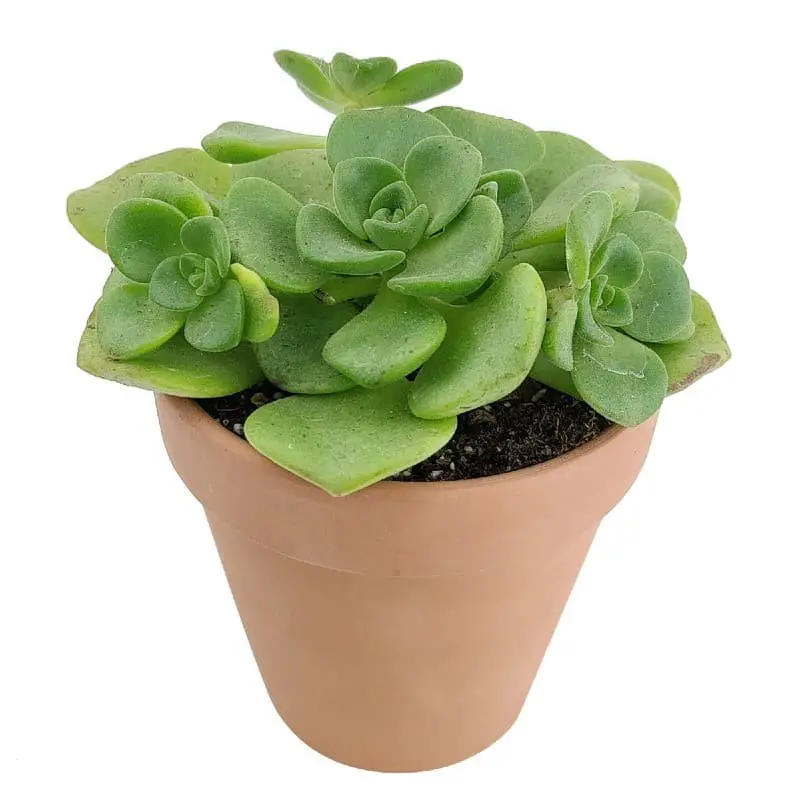
Experience the beauty of Aeonium ‘Lily Pad’ in your home, where its effortless charm will thrive amidst a variety of environments. This stunning succulent requires minimal upkeep, making it an ideal selection for both novice and seasoned plant enthusiasts alike. With its ability to adapt to diverse conditions, Aeonium ‘Lily Pad’ is sure to bring a touch of serenity and elegance to your space.
Aeonium lindleyi.
Native to the Canary Islands, Aeonium lindleyi is a perennial succulent that thrives within the Crassulaceae family. This species was aptly named after British botanist John Lindley (1799-1865) in recognition of his contributions to the field. Characterized by its striking green leaves with reddish margins, arranged in a rosette pattern, this plant can grow up to 30 cm tall. The vibrant yellow flowers that bloom in early summer only add to its visual appeal.
Propagation is possible through seeds or cuttings, and optimal growth conditions include full sun to partial shade and well-drained soil.
Aeonium Mardi Gras.
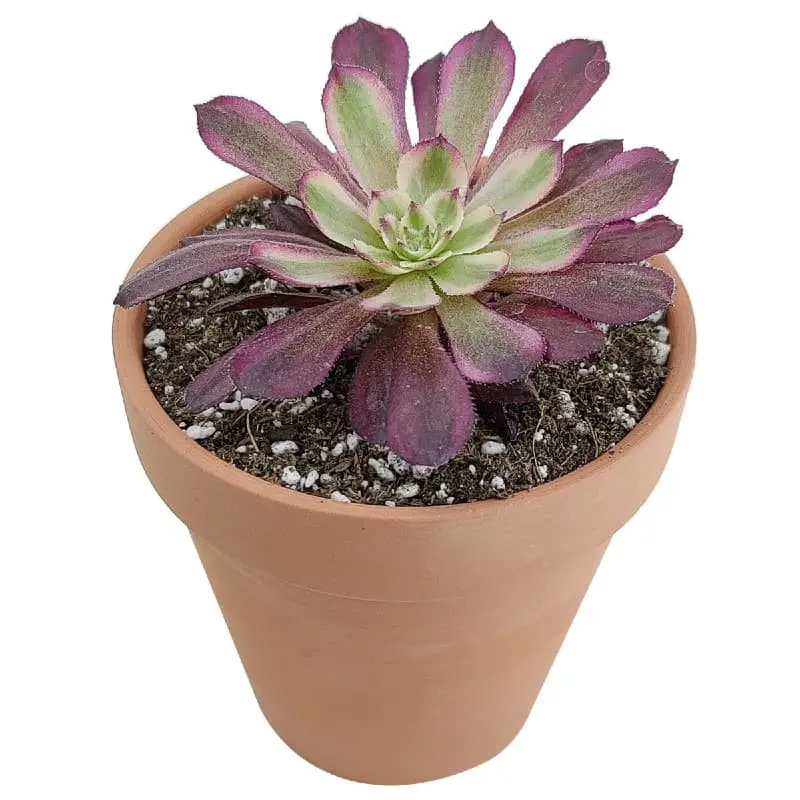
Aeonium Mardi Gras, a succulent native to the Canary Islands, presents an attractive rosette shape that can reach up to 12 inches in diameter. Its leaves boast striking green hues with vibrant yellow or white stripes, while tiny yellow blooms add a touch of elegance. This low-maintenance plant is ideal for novice gardeners, demanding minimal water and care.
Aeonium mascaense.
Aeonium mascaense is a succulent species that belongs to the Crassulaceae family. Native to Tenerife in the Canary Islands, this plant has adapted to thrive in its unique environment. Characterized by its ability to store water within its leaves and stems, Aeonium mascaense grows up to 30 cm tall, with oblong-lanceolate leaves that can reach lengths of up to 12 cm and widths of up to 30 mm, terminating in a pointed tip.
The plant’s showy white flowers feature five petals, adding a touch of elegance to its already striking appearance.
Aeonium nobile.
Native to the Canary Islands, specifically Tenerife and La Gomera, Aeonium nobile is a distinctive succulent plant that belongs to the Crassulaceae family, which boasts a diverse range of well-known species like sedums and sempervivums. Characterized by its rosette-forming growth habit, this succulent can grow up to 30 cm in diameter, featuring green leaves with striking red margins.
Its floral displays are equally impressive, comprising white or pink blooms that add a touch of elegance to the overall appearance.
Aeonium occidentale.
This small perennial succulent, belonging to the Crassulaceae family, can grow up to 30 cm (12 inches) tall and wide. It forms rosettes of leaves on stems that are home to fleshy, oblanceolate or spoon-shaped leaves measuring up to 15 cm (0.59 inches) in length. These leaves often appear alone or in whorls of three and display a striking combination of green and red hues along their margins.
The plant’s bright yellow flowers also deserve attention, as they bloom on branched inflorescences that can reach heights of up to 60 cm (24 inches). Native to the western United States, this succulent can be found in California, Nevada, Utah, and Arizona. It thrives in arid environments such as the Mojave Desert and the Great Basin desert. As an ornamental plant, it is cultivated by succulent enthusiasts for its unique beauty.
Aeonium percarneum ‘Kiwi’ (Kiwi Aeonium).
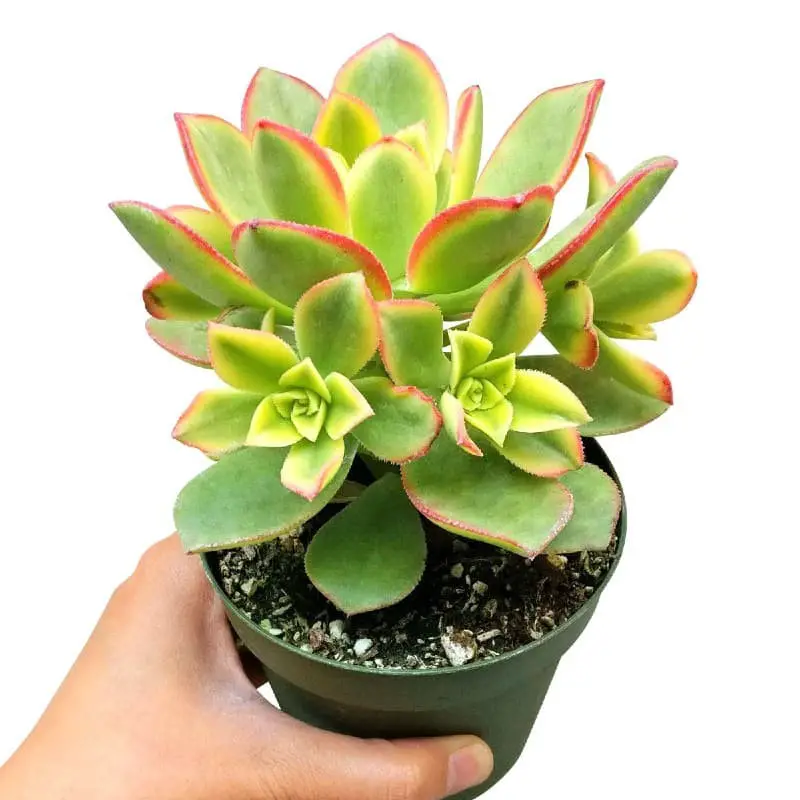
This succulent, native to the Canary Islands, boasts a striking appearance with green leaves featuring white spots arranged in a rosette pattern. During the summer months, it produces bright yellow flowers. Introduced into cultivation in the 1990s as ‘Kiwi’, this plant has quickly gained popularity due to its low-maintenance requirements. It thrives in well-lit environments but can also tolerate partial shade.
Watering is straightforward: simply wait until the soil feels dry to the touch, then allow the plant to fully dry out before the next watering cycle. ‘Kiwi’ succulents are easily propagated via stem cuttings or offsets, making them an excellent choice for home gardeners and indoor enthusiasts alike.
Aeonium Pseudotabuliforme (Aeonium Green Platters).
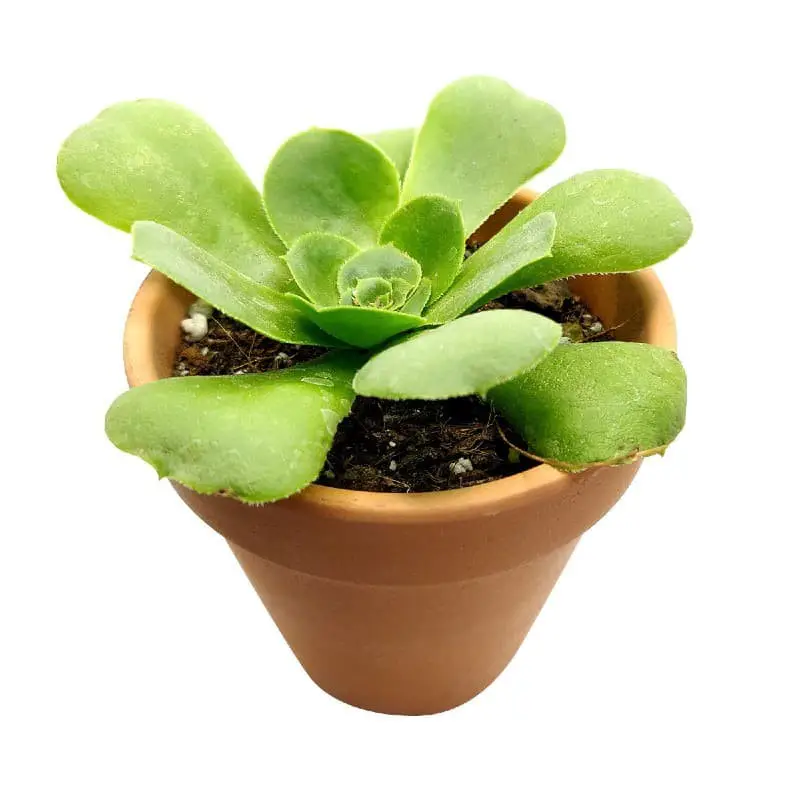
Among the most striking Aeoniums, this species forms perfectly rounded rosettes measuring up to eight inches in diameter, characterized by thick, fleshy, green leaves with smooth margins. At the center of each rosette lies a small crater, adding an intriguing layer of visual interest. When blooming, a slender inflorescence rises from the rosette’s core, yielding hundreds of tiny, star-shaped yellow flowers.
A unique feature of this species is its monocarpic nature – it will produce a single bloom and then die, but not before generating offsets (pups) around its base. These pups can be carefully removed and cultivated to create new plants. As a native of the Canary Islands, Aeonium Pseudotabuliforme thrives in partial sun to full sun conditions, exhibiting drought tolerance while still appreciating occasional supplemental watering during prolonged dry spells.
Additionally, this species displays remarkable cold hardiness, capable of withstanding temperatures as low as 20 degrees Fahrenheit.
Aeonium saundersii.
Aeonium saundersii is a rare gem in the world of succulents, native to the Canary Islands. This evergreen perennial grows up to 12 inches tall and 24 inches wide, boasting thick, fleshy leaves with a rich green hue and a striking purple tinge on the tips. The small, yellow blooms that appear in spring and summer add a touch of vibrancy to this stunning plant.
Whether used in succulent gardens, rock gardens, or as a container piece, Aeonium saundersii is an excellent choice for those seeking a low-maintenance yet visually striking addition to their outdoor spaces. Its exceptional drought tolerance only adds to its appeal, making it a worthwhile search for enthusiasts and collectors alike.
Aeonium sedifolium.
Aeonium sedifolium, native to the Canary Islands, boasts a unique appearance that sets it apart from other succulents. The plant’s Sedum-like leaves form a rosette shape, with vibrant green hues and white or yellow margins adding visual interest. Meanwhile, small white flowers provide a delicate touch. Notably, this succulent is incredibly low-maintenance, making it an ideal choice for novice gardeners.
Its drought-tolerant nature means it can withstand occasional neglect, and its ability to add pops of color to the garden only adds to its appeal.
Aeonium simsii.
Aeonium simsii, a succulent species belonging to the Crassulaceae family, originates from the Canary Islands, where it thrives in rocky terrain. This perennial plant can grow up to 30 cm tall and boasts green leaves adorned with white spots. A striking feature of this succulent is its bright yellow blooms that appear during the summer months.
Aeonium smithii.
Aeonium smithii, a flowering plant native to Tenerife in the Canary Islands, is an evergreen succulent that grows up to 30 centimeters tall and wide. Its rosette of fleshy leaves boasts a striking combination of green coloration with red margins, measuring up to 15 centimeters long and 12 centimeters wide, featuring a pointed tip. The plant’s yellow blooms are supported by an inflorescence that can reach a height of 60 centimeters.
Aeonium spathulatum.
Aeonium spathulatum, a small perennial succulent, exhibits its unique characteristics through the formation of rosettes. Its spoon-shaped leaves boast a glossy surface, while vibrant yellow flowers bloom in clusters at the tips of the stems. This species is native to the Canary Islands, where it thrives on cliffs and rocky terrain, also extending its range to Madeira, Morocco, and Portugal.
This adaptable plant excels in containers or as a groundcover in rock gardens, showcasing its resilience by tolerating drought-like conditions and full sun to partial shade. Its versatility makes it an excellent addition to any succulent collection.
Aeonium Sunburst (Copper Pinwheel).
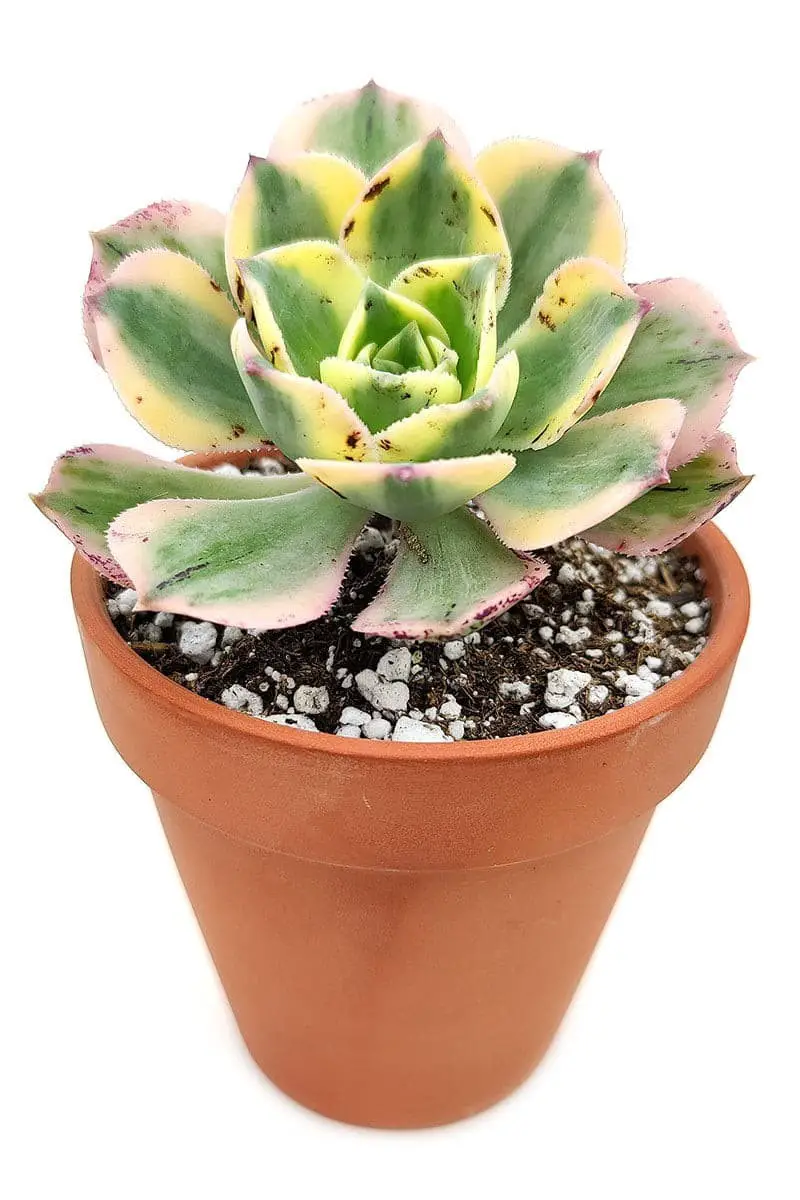
The Sunburst Aeonium is a stunning hybrid that boasts intricately patterned leaves with copper hues and yellow margins, arranged in a spiral formation that can reach up to 12 inches in diameter. This relatively new plant variety has gained popularity for its unique rosettes that come in a range of colors. While more research is needed to determine the ideal care requirements, it’s generally suggested that the Sunburst thrives in well-drained soil and enjoys bright, indirect light.
Aeonium Suncup Variegata.
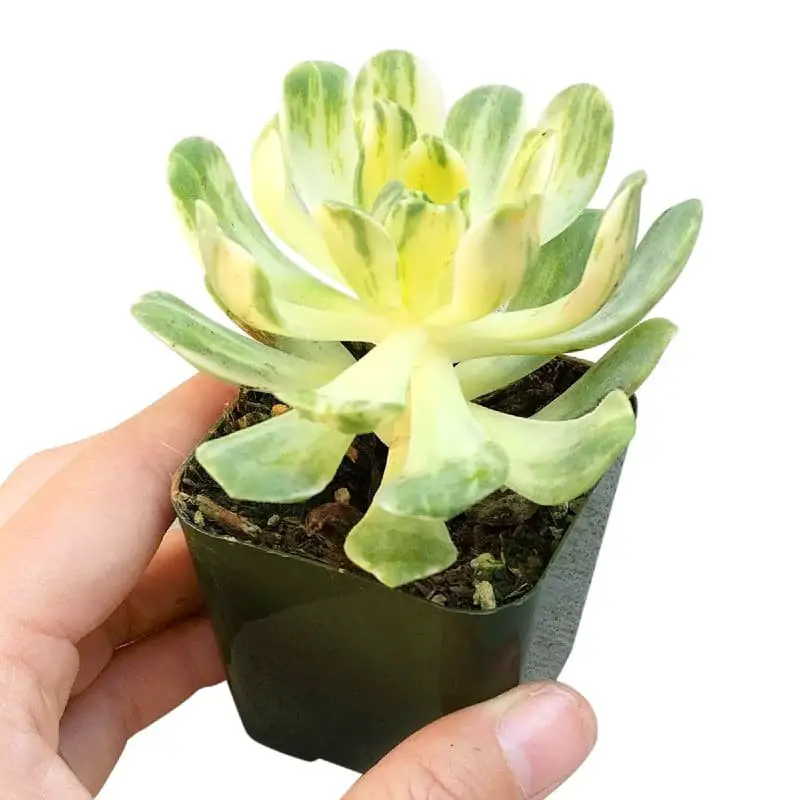
The vibrant Echeveria canariensis is a stunning succulent species originating from the Canary Islands. Its slender leaves terminate in bright yellow or orange blooms, adding a pop of color to any space. This plant grows up to 30 centimeters tall and 30 centimeters wide, making it an ideal addition to indoor gardens or outdoor containers.
Aeonium undulatum.
The Aeonium undulatum, a stunning succulent species from the Canary Islands, boasts an impressive range of 35+ species within its genus. This captivating plant can grow up to 30 centimeters tall, characterized by its wavy, green leaves adorned with creamy yellow margins. As if that weren’t enough, it also produces vibrant yellow flowers in the spring, adding a pop of color to its unique appearance.
Aeonium urbicum (Saucer Plant).
Aeonium urbicum, a succulent species within the Aizoaceae family, originates from Morocco and Spain. This plant stands at approximately 30 cm (12 in) in height, featuring rosettes of fleshy, spoon-shaped leaves that are green with red margins and tips. The yellow flowers, which bloom on racemes up to 60 cm (24 in) long, add a vibrant touch to the plant’s overall appearance.
As an ornamental plant, Aeonium urbicum is often cultivated in pots and gardens within warm temperate and subtropical regions. Its remarkable drought tolerance and low maintenance requirements make it an ideal choice for busy gardeners or those looking to add some unique flair to their outdoor spaces.
CRESTED Aeonium Sunburst.
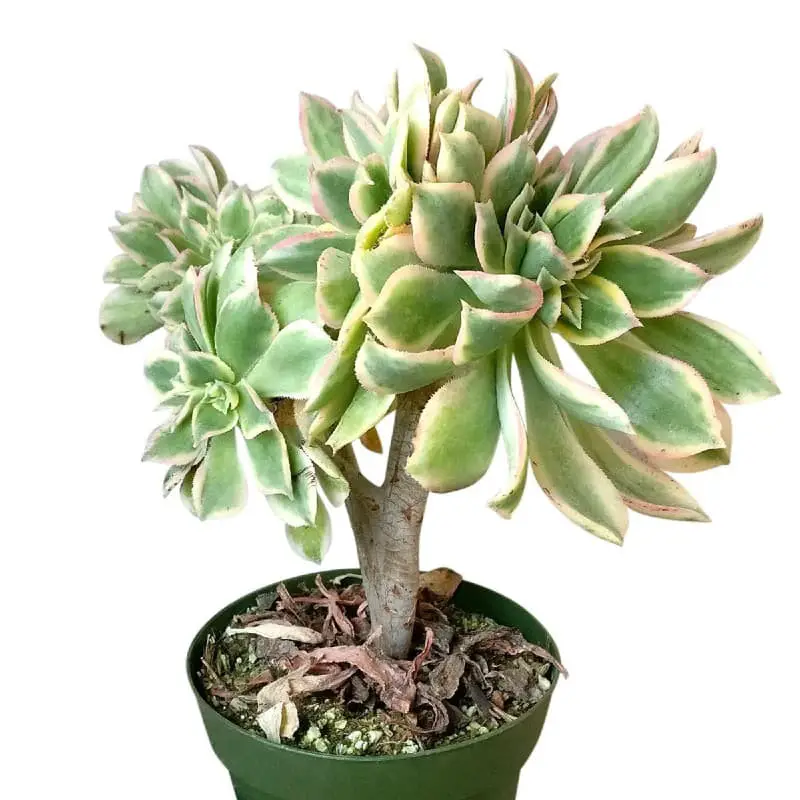
Aeoniums, a type of succulent native to the Canary Islands, have gained popularity for their stunning rosettes and vibrant colors. Among them, the Crested Aeonium Sunburst stands out as a unique hybrid created by crossing two distinct species. This low-maintenance plant is ideal for novice succulent growers, thriving in both indoor and outdoor settings with minimal watering requirements.
Its versatility makes it an excellent choice to bring a pop of color and visual interest to any home or garden.
Planting Aeonium.
When to plant Aeonium?
When it comes to planting Aeonium, timing is everything. In general, spring and fall are ideal seasons for getting these plants in the ground. However, if you reside in a region with scorching summers, it’s advisable to delay planting until the cooler autumn months arrive. This is because Aeonium can tolerate some frost, but prolonged exposure to freezing temperatures can cause damage to its leaves.
If you’re unsure about when the last frost date occurs in your area, a quick glance at the USDA Hardiness Zone Map should provide the necessary insight.
Where to plant Aeonium?
When selecting a location for your Aeonium, there are several key factors to consider. Firstly, you’ll want to think about the local climate and its suitability for this succulent species. Aeonium generally thrive in warm conditions, so areas with average temperatures above 64°F (18°C) are ideal. Additionally, well-drained soil is essential, as these plants don’t tolerate moisture very well.
Furthermore, a spot that receives at least six hours of direct sunlight per day will allow your Aeonium to photosynthesize efficiently and grow strong. Once you’ve identified the perfect spot, make sure to plant it at the correct depth, ensuring the roots are fully covered while leaving enough stem exposed for proper growth.
How to plant Aeonium.
Adding a pop of color to your garden is effortless with Aeonium succulents. This vibrant group comes in a kaleidoscope of hues, including pink, purple, red, and yellow. Perfect for novice gardeners, Aeonium is surprisingly low-maintenance. To get started, you’ll want to familiarize yourself with its requirements.
Aeonium thrives in well-drained soil and basks in the warmth of full sun to partial shade.
When planting, remember to leave ample space between each succulent – a mere 18 inches should suffice. Watering is also straightforward: simply allow the soil to dry out slightly between drinks. For areas with harsh winters, Aeonium can be grown as an annual or brought indoors for the season to ensure its continued health.
How to care for Aeonium
Sun and shade needs.
Aeoniums, a diverse group of succulents, exhibit a wide range of characteristics in terms of size, shape, and color. However, when it comes to their sun and shade tolerance, each species has its unique requirements. Some Aeoniums can thrive in full sun, while others prefer partial shade or even shadier conditions. As such, it’s crucial to understand the specific needs of your chosen Aeonium to ensure it receives the right amount of sunlight.
For instance, some species like Aeonium haworthii are adapted to shady habitats and can be damaged by excessive sunlight, while others like Aeonium arboreum are native to sunny environments and may become leggy or etiolated if they don’t receive sufficient light. By matching the sun and shade requirements of your Aeonium with the conditions in your garden, you can avoid potential issues and provide the best possible care for your succulent.
If you’re unsure, it’s always a good idea to err on the side of caution and provide partial shade. With proper care and attention, your Aeonium is likely to flourish and bloom beautifully for many years.
Watering needs.
Aeoniums may appear resilient to dry conditions, but they still require regular watering to thrive. A weekly deep watering during the growing season can lead to an explosion of flowers. If you do decide to let your plants go completely dry, be aware that they may drop some leaves as a result, but they will quickly rebound once rehydrated. In contrast, winter months call for a more conservative approach – just enough water to keep leaves from shriveling.
Be cautious not to overwater during this time, as excess moisture can lead to root rot.
Temperature needs.
Aeoniums thrive in average room temperatures ranging from 65 to 75 degrees Fahrenheit. While they can withstand minor temperature fluctuations, they are sensitive to extreme variations that can cause adverse effects on the leaves. If the temperature rises too high, the leaves will begin to wilt, while a sudden drop in temperature can cause the plant to go into shock. As such, it’s essential to maintain a stable and comfortable environment for your Aeoniums.
Soil Needs.
When it comes to soil type, Aeoniums are surprisingly flexible and can thrive as long as it’s well-drained. In fact, they’re particularly susceptible to root rot if their roots sit in water for too long. If your garden features heavy clay or poor drainage, consider elevating them in raised beds or containers to ensure a healthy growing environment.
For plants grown in pots, more frequent watering is essential to prevent moisture buildup and related issues.
To create the perfect potting mix, combine equal parts of a succulent-formulated potting mix, perlite, and coarse sand. This blend will provide Aeoniums with the necessary aeration and drainage.
While Aeoniums aren’t demanding when it comes to nutrients, an annual spring application of a balanced fertilizer can still promote healthy growth. If you’re growing them in containers, consider fertilizing every other month during the active growing season.
Fertilizing Needs.
While aeoniums don’t require heavy feeding, they do thrive when provided with a light application of balanced fertilizer during their active growing season. I recommend using a liquid formula that contains equal parts nitrogen, phosphorus, and potassium, diluted to half-strength, and applied every other week. For outdoor growers, it’s essential to fertilize your aeoniums only during the spring and summer months, as excessive fertilizer can cause leaf burn.
Additionally, steer clear of formulas with high nitrogen content, as this can promote rapid growth that may leave your plant more vulnerable to wind damage.
Propagating Aeoniums.
Aeonium propagation is surprisingly straightforward, with two main methods: stem cuttings and offsets. Here’s a step-by-step guide on how to propagate aeoniums using stem cuttings.
To begin, take a four-inch long stem cutting with at least two leaves attached. Remove the lower leaves, leaving only two, and treat the end of the cutting with rooting hormone. Next, plant the cutting in well-draining soil and water thoroughly.
Place the pot in a warm, sunny spot and give it time – it’ll take around four to six weeks for roots to develop. The process is identical when propagating offsets: simply separate an offset from the parent plant, pot it up with good drainage, and provide warmth and light.
What’s more, you can propagate aeoniums year-round, but spring and summer are ideal times due to optimal growing conditions.
Transplanting Aeoniums.
When contemplating the transplantation of your Aeonium succulents, several key factors should be considered. As succulents, they require minimal watering – too much water can actually be detrimental to their survival. Additionally, Aeoniums thrive in bright light conditions but cannot tolerate direct sunlight. Furthermore, it’s crucial to utilize a well-draining potting mix when transplanting these plants. Once the basics are understood, the process of transplantation can begin.
The first step involves carefully removing the plant from its current pot by gently loosening the roots and lifting it out. Next, select a new container that features drainage holes and sufficient space to accommodate the Aeonium’s root system. Fill the chosen pot with well-draining potting mix, then delicately place the Aeonium within it, ensuring its roots are thoroughly covered. Finally, water the plant well and position it in a bright area with indirect sunlight.
Repotting Aeoniums.
When it comes to succulents, Aeoniums are particularly low-maintenance. They thrive in a variety of environments and require minimal watering. However, like any plant, they need occasional repotting to maintain their health. This is especially true if the roots have started to constrict the plant’s growth. To successfully repot an Aeonium, start by selecting a container that provides just enough space for its roots. Avoid using a pot that’s too large, as excess water can lead to root rot.
Next, add drainage holes to the bottom of the new pot and fill it with a well-draining succulent mix. Carefully remove your Aeonium from its current pot, taking care to loosen any tightly packed roots. Once free, place the plant in the center of the new container and surround it with potting mix, gently tamping down as you go. Water thoroughly and position the plant in a spot that receives plenty of sunlight.
Pests and Diseases.
Aeoniums are surprisingly resilient plants that can thrive even with minimal care. However, they do have a few vulnerabilities to pests and diseases. The most common issues include mealybugs, scale insects, aphids, and root rot. These problems can manifest in various ways, such as stunted growth, yellowing leaves, distorted foliage, or even the death of the plant itself. Mealybugs are tiny, fuzzy creatures that feed on a plant’s sap, causing it to grow weakly and turn yellow.
Scale insects, on the other hand, are hard-bodied pests that latch onto stems and leaves, sucking out the plant’s sap and stunting its growth. Aphids are soft-bodied pests that also feed on sap, leading to deformed growth and yellowing. Root rot is a fungal disease that can be fatal if left untreated. It occurs when the roots of the aeonium become waterlogged, causing them to rot.
To avoid these problems, it’s essential to keep your aeoniums in well-ventilated areas, where air can circulate freely. Water them sparingly, making sure the soil is dry before rehydrating. Avoid letting leaves sit in water, as this can create an ideal environment for pests and diseases to thrive. If you do encounter pests or disease, take prompt action by removing affected leaves and stems manually or using insecticidal soap.
By being proactive and taking proper care of your aeoniums, you can help them stay healthy and happy.
Common problems with Aeoniums.
Aeoniums are prone to several issues, the most common being root rot caused by excessive moisture. To combat this, ensure good drainage or let the soil dry out slightly between waterings. Powdery mildew is another frequent problem that can be addressed with a fungicide treatment. If pests become an issue, insecticides can provide relief. Additionally, Aeoniums may become leggy and produce fewer flowers if they’re not receiving sufficient light.
To resolve this, simply relocate the plant to a brighter location.
Conclusion
Succulent enthusiasts are often drawn to the versatility and uniqueness of Aeoniums. With their diverse range of shapes, sizes, and colors, it’s no wonder why these plants have become a staple in many homes and gardens. Whether you’re seeking a low-fuss addition or a statement piece, the wide variety of Aeonium species ensures that there’s something to suit every taste and environment.
Related Posts
When it comes to succulent enthusiasts, there’s one plant that stands out from the rest: the String of Pearls. Its unique appearance, with strings of small, rounded ‘pearls’ connected by thin stems, makes it a favorite among plant lovers. But before you can enjoy this beauty in your own home, you need to learn how to grow and care for it properly.
Unfortunately, many succulent enthusiasts struggle with keeping their plants alive, which is why we’ve also included some tips on what to do when your succulents start dying. Additionally, if you’re looking to expand your succulent family, we’ve got guides on growing and caring for other popular varieties like Peperomia Graveolens ‘Ruby Glow’, Rhipsalis cereuscula (Coral Cactus), Crassula muscosa ‘Watch Chain’, and even planting succulents in containers without drainage.






